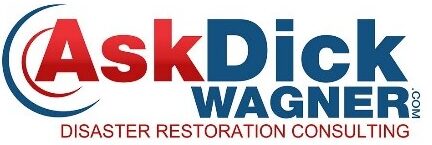Effective route marketing and building a strong referral network is essential for generating consistent leads.

With the wide range of potential referral sources – plumbers, insurance agents, carpet cleaners, and other professionals – it is critical to qualify all prospects to identify who can provide high-value, ongoing business. The goal is to prioritize time and resources on establishing relationships with reliable and profitable referrers.
In this blog article, I list 4 strategic approaches to qualifying referral sources and methods to implement them.
- Observe Online Presence and Reviews
The digital footprint of potential referral sources can provide valuable insights for the marketer. Businesses with active online profiles, positive client reviews, and an established reputation are likely to be reliable and well-regarded in their communities. A well-maintained online presence can indicate a high level of professionalism, which may also translate into a more reliable referral relationship.
Implementation Strategy:
Marketers should conduct online research by looking at the website, social media profiles, and client reviews for each prospect – BEFORE A VISIT. Google Reviews, and the Better Business Bureau are excellent resources for gauging a business’s reliability. If a carpet cleaner has multiple five-star reviews citing their professionalism and reliability, this could indicate they will take a similar approach when referring clients to disaster restoration services. After shortlisting referral sources based on online reputation, marketers can schedule in-person meetings to further qualify them.
- Conduct In-Person Assessments
Phone calls can be very difficult and not very effective at gauging interest. The most effective way to qualify referral sources is through direct face-to-face visits after you’ve done your homework. By speaking with potential referral sources, marketers can gauge their level of interest, their understanding of the disaster restoration industry, and the likelihood of regular referrals.
Implementation Strategy:
When reaching out face to face (rather than calling) to a potential referral source, marketers should ask specific questions that reveal insights about the prospect’s clientele, referral habits, and openness to partnership. The conversation can reveal how likely the plumber is to refer clients needing immediate assistance. Based on their responses, marketers can prioritize those who express a strong willingness and have a compatible client base. Simply put: ASK GOOD QUESTIONS.
- Test the Relationship with a Trial Period
Offering a short trial period or pilot partnership is an effective way to assess a referral source’s potential before committing to a long-term relationship. During this period, marketers can evaluate how many referrals a source provides, the quality of those referrals, and how effectively the relationship is working overall. Don’t be afraid to say you’re going to have a trial period. That makes it exclusive and much more likely the prospect will actually produce leads.
Implementation Strategy:
To implement a trial period, marketers can propose an initial, informal partnership with a few select referral sources. At the end of this period (3 – 6 months), marketers can review the results to decide if the partnership should continue or if efforts should be redirected toward more productive sources. Most restoration owners will say that even one job in a year makes it worth marketing to them in person. The reality is that the marketers’ time is limited and there are many referral sources that can provide many leads in just a few months! Don’t waste time with incredible long-shots.
- Leverage Mutual Referrals for Relationship-Building
Mutual referrals can be a powerful qualifying strategy, creating a win-win situation that benefits both parties. Offering to refer clients back to the referral source can incentivize them to prioritize your business, creating a deeper commitment to the relationship. Remember that “OFFERING” is not enough. You must actually refer leads to them as well! This mutually beneficial dynamic will lead to increased trust, loyalty, and frequent referrals.
“OFFERING” is not enough. You must actually refer leads to them as well! This mutually beneficial dynamic will lead to increased trust, loyalty, and frequent referrals.
Implementation Strategy:
When approaching a potential referral source, marketers should discuss the possibility of mutual referrals, explaining how each business can help the other grow. For instance, a disaster restoration company might refer clients to a plumber for minor repairs following water damage incidents. I work with numerous restoration contractors that specialize in cleaning and dry out, and regularly get plumbers, electricians and carpet cleaners involved in the project once the disaster clean-up is complete.
Qualifying referral sources is an important step in building an effective and profitable network for disaster restoration route marketers. By analyzing historical data and conducting initial screenings your time is used efficiently. Assessing their online presence, and establishing mutual referral agreements, field marketers can identify and prioritize high-quality referral sources. This approach ensures that marketing efforts are directed toward sources that provide meaningful, sustainable leads, helping the marketer and the business they represent achieve consistent growth and success in the competitive disaster restoration industry.
 Nationally recognized coach, consultant, trainer, and speaker
Nationally recognized coach, consultant, trainer, and speaker
Creator of the renowned PREP™ pre-disaster program
Co-owner of The CREST Network, LLC
Copyright© 2025 AskDickWagner, LLC All Rights Reserved
No Part Of This Document May Be Reproduced In Any Form Without Written Permission
